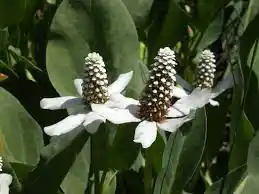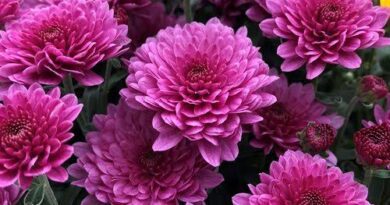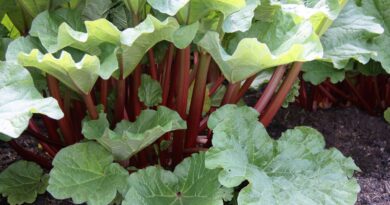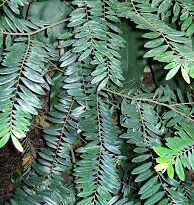15 Medicinal Health Benefits Of Yerba Mansa (Anemopsis californica)
Yerba Mansa, scientifically known as Anemopsis californica, is a perennial herbaceous plant native to the southwestern United States and parts of Mexico. With its unique botanical characteristics and traditional uses, Yerba Mansa has become a subject of interest for both botanists and herbal enthusiasts.
The plant typically thrives in wetland habitats, showcasing a preference for marshy areas, streambanks, and pond margins. Its distinctive features include large, leathery leaves that are lance-shaped and possess a glossy, green hue.
The robust nature of Yerba Mansa is evident in its ability to adapt to various environmental conditions, from arid landscapes to regions with ample water sources.
One of the remarkable aspects of Yerba Mansa lies in its historical significance among indigenous communities. Native American tribes, particularly those in the southwestern regions, have long recognized the medicinal properties of this plant. The roots of Yerba Mansa contain bioactive compounds that have been traditionally used for their therapeutic benefits.
These include anti-inflammatory and antimicrobial properties, making Yerba Mansa a valuable resource in traditional herbal medicine.
In traditional herbal practices, Yerba Mansa has been employed to address a range of health concerns. The roots are often utilized to create infusions or extracts, which are believed to have potential benefits for respiratory conditions.
Additionally, Yerba Mansa has been historically used to alleviate digestive issues, with its soothing properties thought to provide relief for ailments such as indigestion.
Beyond its medicinal uses, Yerba Mansa also holds cultural significance. Various Native American communities incorporate the plant into rituals and ceremonies, viewing it as a symbol of purification and spiritual cleansing.
The cultural importance of Yerba Mansa reflects the deep connection between indigenous populations and the natural environment, where plants are revered not only for their practical applications but also for their spiritual symbolism.
In terms of cultivation, Yerba Mansa requires specific conditions to thrive. As a wetland plant, it flourishes in soil with consistent moisture levels and can be cultivated in gardens with appropriate irrigation systems.
Gardeners interested in incorporating native and medicinal plants into their landscape may find Yerba Mansa to be a compelling addition, providing both aesthetic appeal and potential health benefits.
Conservation efforts for Yerba Mansa are gaining attention due to its ecological role in wetland ecosystems. The plant contributes to biodiversity and supports a variety of wildlife, including insects and birds that are attracted to its nectar-rich flowers.
Preservation of Yerba Mansa habitats is crucial to maintaining the delicate balance of these ecosystems and ensuring the continued availability of this culturally and ecologically significant plant.
Yerba Mansa stands as a botanical treasure with a rich tapestry of uses and cultural importance. From its adaptability to diverse environments to its role in traditional medicine and indigenous rituals, this perennial herbaceous plant continues to capture the fascination of those who explore the intersections of nature, culture, and health.
Whether thriving in a natural wetland or cultivated in a garden, Yerba Mansa serves as a testament to the intricate relationships between plants and the communities that have revered them for generations.
The Botanical Description of Yerba Mansa
1. Overview: Yerba mansa, or Anemopsis californica, is a perennial herbaceous plant native to the southwestern United States and northern Mexico. It belongs to the Saururaceae family and is valued for its unique botanical features.
2. Size and Growth Habit: This robust plant typically reaches one to two feet in height, forming clumps in its preferred wetland habitats. The elliptical leaves and flowering spikes contribute to its distinct appearance.
3. Leaves: Yerba mansa’s leaves are glossy and leathery, growing alternately along the stems. The lance-shaped foliage adds to the plant’s resilience and visual appeal.
4. Flowers: The plant produces cone-like flower spikes with small white flowers containing both male and female reproductive organs. These spikes contribute to yerba mansa’s ornamental value.
5. Root System: Below ground, yerba mansa develops a fleshy and aromatic root system, playing a crucial role in its adaptation to wetland environments.
6. Aroma and Taste: When leaves or roots are crushed, yerba mansa releases a pleasant fragrance described as spicy and peppery. This aromatic quality adds to its traditional uses.
7. Reproduction: Yerba mansa reproduces through both seeds and rhizomes, forming clumps and colonizing wetland areas.
8. Seasonal Changes: Yerba mansa undergoes seasonal changes, displaying vibrant green foliage and flowers during the growing season and experiencing dieback in colder months.
9. Ecological Interactions: The plant provides habitat and food for wildlife, with insects like bees and butterflies being attracted to its flowers.
10. Cultural and Medicinal Significance: Beyond its botanical features, yerba mansa holds cultural importance, used traditionally by indigenous peoples for medicinal purposes.
The Geographic Distribution of Yerba Mansa
1. Native Range: Yerba mansa is native to the southwestern United States, including Arizona, California, Nevada, New Mexico, and Texas, as well as parts of northern Mexico.
2. Preferred Habitats: Thriving in wetland environments, yerba mansa is commonly found along stream banks, in marshy areas, and near ponds or lakes.
3. Altitudinal Range: Yerba mansa adapts to various altitudes, ranging from lowland areas near sea level to elevations reaching up to 7,000 feet.
4. Human Impact and Cultivation: While primarily found in natural habitats, human cultivation has expanded yerba mansa’s presence in botanical gardens and native plant landscapes.
5. Range Limitations: Yerba mansa’s distribution is limited by its specific habitat requirements, including wetlands and riparian zones.
6. Conservation Status: Conservation efforts aim to protect yerba mansa populations, as the plant may face threats from habitat loss and invasive species.
7. Ethnobotanical Significance: Indigenous communities value yerba mansa for its traditional uses, emphasizing the link between ecosystems and cultural knowledge.
8. Biotic Interactions: Yerba mansa interacts with various biotic components, with insects playing a role in its reproductive success.
9. Climate Adaptations: The plant’s ability to withstand arid climates and periodic flooding showcases its adaptations to diverse environmental settings.
10. Habitat Restoration: Yerba mansa is considered in habitat restoration projects to reintroduce the plant to degraded or disturbed wetlands.
The Chemical Composition of Yerba Mansa
1. Aromatic Compounds: Yerba mansa contains aromatic compounds contributing to its spicy and peppery fragrance when leaves or roots are crushed.
2. Polyphenols: Polyphenolic compounds, known for their antioxidant properties, are present in yerba mansa, potentially contributing to its traditional uses.
3. Tannins: The plant contains tannins, providing astringent properties that influence taste and may contribute to herbal preparations.
4. Alkaloids: Yerba mansa is known to contain alkaloids, a group of nitrogenous compounds often studied for their pharmacological significance.
5. Essential Oils: Essential oils extracted from yerba mansa contribute to its aromatic profile and may have therapeutic applications in aromatherapy.
6. Mucilage: Yerba mansa’s mucilage adds to its slimy or gel-like texture when crushed, associated with certain traditional uses.
7. Terpenoids: Terpenoids found in yerba mansa are a diverse group of compounds with potential biological activities, subject to botanical research.
8. Flavonoids: Flavonoids, a class of polyphenolic compounds, are present in yerba mansa, contributing to coloration and antioxidant properties.
9. Phenolic Acids: Phenolic acids, including hydroxybenzoic and hydroxycinnamic acids, are part of yerba mansa’s chemical composition with potential health benefits.
10. Resins: Yerba mansa contains resins, semi-solid substances that may contribute to its defense mechanisms and adaptation to environmental stressors.
11. Lipids: Lipids, including various fatty acids, are present in yerba mansa, essential for cellular structure and nutritional value.
12. Saponins: Saponins found in yerba mansa are glycosides with soap-like properties, potentially studied for their biological activities.
Read Also: The Advantages of Used Farming Equipment
The Medicinal Health Benefits Of Yerba Mansa (Anemopsis californica)

1. Respiratory Support: Yerba mansa has been traditionally used for respiratory ailments. Its anti-inflammatory properties may help alleviate conditions like bronchitis and cough.
2. Digestive Aid: The plant is known for its digestive benefits, promoting gastrointestinal health. It may assist in easing indigestion and supporting overall digestive function.
3. Anti-Inflammatory Effects: Yerba mansa contains compounds with anti-inflammatory properties, which can contribute to reducing inflammation in various parts of the body.
4. Immune System Boost: Regular consumption of yerba mansa may support the immune system, helping the body defend against common infections and illnesses.
5. Antioxidant Protection: The presence of polyphenols in yerba mansa contributes to its antioxidant properties, potentially protecting cells from oxidative stress.
6. Analgesic Properties: Yerba mansa has been traditionally used as a natural analgesic, with compounds that may help alleviate pain and discomfort.
7. Anti-Infective Qualities: Some studies suggest that yerba mansa possesses anti-infective properties, which could be beneficial in addressing certain microbial infections.
8. Anti-Arthritic Effects: The plant’s anti-inflammatory and analgesic properties may contribute to its potential in addressing symptoms associated with arthritis.
9. Diuretic Action: Yerba mansa is believed to have diuretic effects, promoting the elimination of excess fluids from the body and supporting kidney function.
10. Wound Healing: Traditional uses of yerba mansa include its application to wounds. Its antimicrobial properties may contribute to promoting faster wound healing.
11. Respiratory Steam Inhalation: Inhaling steam infused with yerba mansa may help relieve respiratory congestion and promote clearer breathing.
12. Digestive Infusions: Yerba mansa infusions can be consumed to support digestive health, with potential benefits for indigestion and mild gastrointestinal discomfort.
13. Poultices for External Application: Creating poultices with yerba mansa and applying them externally may help address skin issues and promote healing.
14. Tinctures for Internal Use: Yerba mansa tinctures, when used according to recommended dosages, can offer a concentrated form of its medicinal properties for internal use.
15. Herbal Compresses: Applying herbal compresses infused with yerba mansa may provide relief for localized pain and inflammation, making it a versatile external application.
The Methods of Usage to Achieve the Provided Health Benefits Of Yerba Mansa (Anemopsis californica)
1. Herbal Teas: Prepare yerba mansa herbal teas by steeping dried leaves or roots in hot water. This is an effective way to harness its digestive and respiratory benefits.
2. Tincture Consumption: Yerba mansa tinctures, available in health stores, offer a convenient way to incorporate the plant’s medicinal benefits into your daily routine.
3. Steam Inhalation: Inhaling steam infused with yerba mansa by adding its leaves or extracts to hot water can help address respiratory issues and congestion.
4. Topical Applications: Creating poultices or herbal compresses with yerba mansa and applying them to affected areas can provide localized relief for wounds or skin conditions.
5. Culinary Use: Some individuals incorporate yerba mansa into their diet by adding it to soups, stews, or other dishes, benefiting from its medicinal properties in a culinary context.
6. Capsule Supplements: Yerba mansa supplements in capsule form are available, offering a standardized dosage for those seeking a convenient option for internal use.
7. Infused Oils: Extracting the medicinal properties of yerba mansa into oils for topical application can be achieved through infusing carrier oils with the plant material.
8. Traditional Remedies: Following traditional practices passed down through generations, such as brewing specific yerba mansa preparations, ensures cultural authenticity in medicinal use.
9. Consultation with Herbalists: Seeking guidance from herbalists or healthcare professionals familiar with yerba mansa can provide personalized recommendations on effective usage.
10. Integration into Holistic Wellness: Incorporate yerba mansa into a holistic wellness approach, combining its usage with a balanced lifestyle, proper nutrition, and exercise.
The Side Effects Of Using Yerba Mansa Medicinal Plant
1. Allergic Reactions: Individuals with known allergies to plants in the Saururaceae family should exercise caution, as allergic reactions are possible.
2. Digestive Sensitivity: Some individuals may experience mild digestive sensitivity when consuming yerba mansa, particularly in high doses.
3. Skin Irritation: Applying yerba mansa externally may cause skin irritation in sensitive individuals. A patch test is advisable before widespread use.
4. Pregnancy and Lactation: Pregnant and lactating individuals should consult healthcare professionals before using yerba mansa, as its safety during these periods is not well-established.
5. Interaction with Medications: Yerba mansa may interact with certain medications. Individuals on medication regimens should seek medical advice before incorporating it into their health routine.
6. Not a Substitute for Professional Medical Care: Yerba mansa should not be considered a substitute for professional medical care. Individuals with serious health conditions should consult healthcare providers.
7. Potential Drug Interactions: Yerba mansa may interact with blood pressure medications and blood thinners. Consultation with a healthcare professional is crucial for those on such medications.
8. Gastrointestinal Discomfort: Excessive consumption may lead to gastrointestinal discomfort, and individuals should adhere to recommended dosage guidelines.
9. Not Recommended for Children: Yerba mansa is generally not recommended for children, and its usage in pediatric populations should be under the guidance of healthcare professionals.
10. Individual Variability: Responses to yerba mansa can vary among individuals. Monitoring for any adverse effects and adjusting usage accordingly is advisable.
Read Also: Are Honey Bees Endangered?
The Scientific Research and Studies of Yerba Mansa

1. Antimicrobial Properties: Scientific studies have explored the antimicrobial properties of yerba mansa, examining its efficacy against various microorganisms. Research suggests that certain compounds in the plant may exhibit inhibitory effects on the growth of bacteria and fungi.
2. Anti-Inflammatory Effects: Studies have investigated the anti-inflammatory effects of yerba mansa, shedding light on its potential to modulate inflammatory responses. This research contributes to understanding how the plant may be beneficial in addressing conditions associated with inflammation.
3. Ethnobotanical Documentation: Scientific research has involved ethnobotanical studies to document the traditional uses of yerba mansa by indigenous communities. This documentation provides valuable insights into the cultural significance and historical applications of the plant.
4. Phytochemical Analysis: Researchers have conducted phytochemical analyses of yerba mansa to identify and characterize its chemical constituents. These analyses help in understanding the plant’s complex chemical composition and may reveal novel bioactive compounds.
5. Wound Healing Properties: Scientific investigations into yerba mansa have explored its potential in wound healing. Studies suggest that the plant’s antimicrobial and anti-inflammatory properties may contribute to accelerating the healing process.
6. Respiratory Health Applications: Research has focused on the respiratory health applications of yerba mansa. Inhalation studies and experiments have been conducted to assess its effects on respiratory conditions, supporting its traditional use for such purposes.
7. Antioxidant Capacity: Scientific studies have assessed the antioxidant capacity of yerba mansa, examining its ability to neutralize free radicals. Antioxidant properties play a crucial role in cellular protection and may contribute to overall health.
8. Adaptogenic Potential: Some scientific inquiries have explored the adaptogenic potential of yerba mansa, examining its ability to help the body adapt to stressors. This research aligns with traditional uses of the plant for supporting overall well-being.
9. Hepatoprotective Effects: Research has investigated the hepatoprotective effects of yerba mansa, focusing on its potential to protect the liver from damage. This area of study contributes to understanding the plant’s impact on liver health.
10. Anti-Cancer Properties: Preliminary studies suggest that yerba mansa may possess anti-cancer properties, with research exploring its effects on certain cancer cell lines. However, further research is needed to elucidate the mechanisms and potential applications.
11. Analgesic Action: Scientific research has delved into the analgesic action of yerba mansa, studying its potential to alleviate pain. Understanding the plant’s pain-relieving properties contributes to its potential applications in pain management.
12. Immunomodulatory Effects: Some studies have investigated the immunomodulatory effects of yerba mansa, exploring how it may modulate immune system responses. This research contributes to understanding its role in supporting immune function.
The Safety Precautions and Recommendations In Using Yerba Mansa Medicinal Plant
1. Allergic Reactions: Individuals with known allergies to plants in the Saururaceae family should exercise caution when using yerba mansa. Allergic reactions, though rare, can occur.
2. Dosage Considerations: Adhering to recommended dosage guidelines is crucial. Excessive consumption may lead to adverse effects, and individuals should start with lower doses, especially if new to using the plant.
3. Pregnancy and Lactation: Pregnant and lactating individuals should consult healthcare professionals before using yerba mansa, as its safety during these periods is not well-established.
4. Interaction with Medications: Yerba mansa may interact with certain medications. Individuals on medication regimens, especially blood pressure medications and blood thinners, should seek medical advice before incorporating it into their health routine.
5. Gastrointestinal Sensitivity: Some individuals may experience mild gastrointestinal sensitivity when using yerba mansa. Starting with small amounts and monitoring for any discomfort is advisable.
6. Not a Substitute for Professional Medical Care: Yerba mansa should not be considered a substitute for professional medical care. Individuals with serious health conditions should consult healthcare providers before using it as a medicinal remedy.
7. Pediatric Use: Yerba mansa is generally not recommended for children without guidance from healthcare professionals. The safety and appropriate dosage for pediatric use should be determined by qualified experts.
8. Skin Sensitivity: External applications of yerba mansa may cause skin irritation in sensitive individuals. Conducting a patch test before widespread use is advisable.
9. Individual Variability: Responses to yerba mansa can vary among individuals. Monitoring for any adverse effects and adjusting usage accordingly is advisable.
10. Consultation with Herbalists: Seeking guidance from herbalists or healthcare professionals familiar with yerba mansa can provide personalized recommendations on safe and effective usage.
FAQs About Yerba Mansa Medicinal Plant
1. Is yerba mansa safe for long-term use?
Yes, yerba mansa is generally considered safe for long-term use when used in moderation and according to recommended dosage guidelines. However, individual responses may vary, and it’s advisable to consult healthcare professionals for personalized advice.
2. Can yerba mansa be used during pregnancy?
Pregnant individuals should consult healthcare professionals before using yerba mansa, as its safety during pregnancy is not well-established. It’s essential to prioritize the well-being of both the individual and the developing fetus.
3. Are there any known drug interactions with yerba mansa?
Yerba mansa may interact with certain medications, including blood pressure medications and blood thinners. Individuals on medication regimens should seek medical advice before incorporating it into their health routine.
4. How can yerba mansa be used for respiratory health?
Yerba mansa can be used for respiratory health through methods such as steam inhalation and herbal teas. Inhaling steam infused with yerba mansa may help relieve respiratory congestion, while herbal teas can provide internal respiratory support.
5. What precautions should be taken for external applications of yerba mansa?
For external applications, individuals should be aware of potential skin sensitivity. Conducting a patch test before widespread use can help identify any adverse reactions. If irritation occurs, discontinuing use is recommended.
6. Can children use yerba mansa?
Yerba mansa is generally not recommended for children without guidance from healthcare professionals. The safety and appropriate dosage for pediatric use should be determined by qualified experts.
7. Does yerba mansa have any known contraindications?
While yerba mansa is considered safe for many individuals, those with known allergies to plants in the Saururaceae family should exercise caution. It’s essential to be aware of individual health conditions and consult with healthcare professionals as needed.
8. How does yerba mansa contribute to wound healing?
Yerba mansa’s antimicrobial and anti-inflammatory properties may contribute to its potential in wound healing. Applying poultices or herbal compresses infused with yerba mansa to wounds may help promote faster healing.
9. Is yerba mansa used in traditional medicine practices?
Yes, yerba mansa has a history of traditional use by indigenous communities for various medicinal purposes. Ethnobotanical studies document its traditional applications, emphasizing its cultural significance.
Read Also: Everything You Need to Know About Hermit Crab









